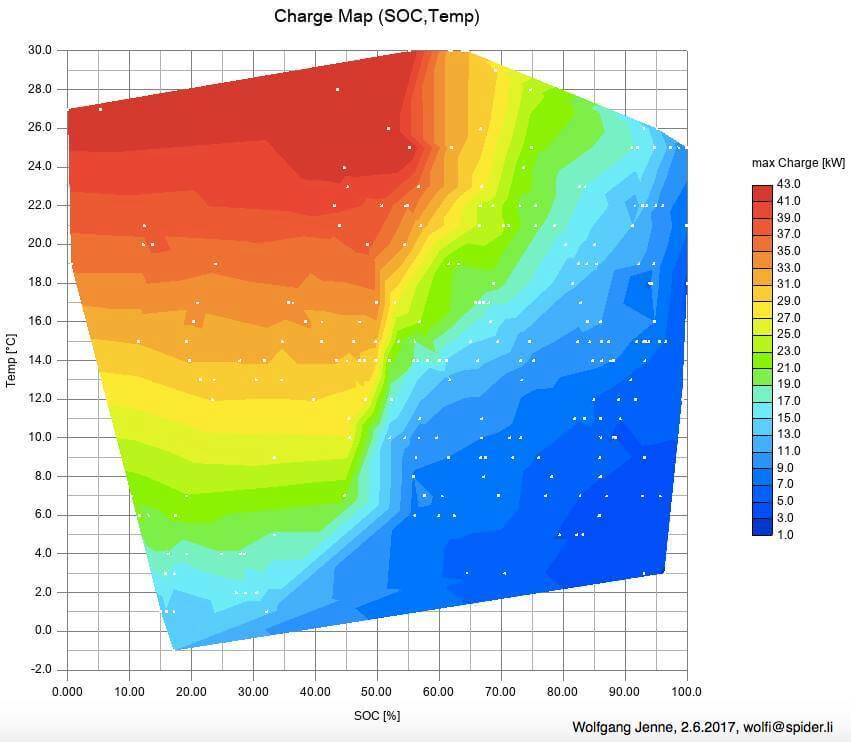Although the winter is slowly coming out, there is still enough time to spend in the mountains for ski enthusiasts and mountain lovers.
But getting there can be challenging, especially at low temperatures. But there are some details that you can make these roads easy and convenient if you pay attention to.
Lithium-ion batteries need a constant temperature to be used in ideal conditions. This is because, at extreme temperatures, performance decreases: shorter battery life, longer charging time, and higher power consumption.
Before implementing any of these measures, it is good to know that the optimum battery temperature is 25 ° C.
And to be able to load quickly in winter, it is necessary that:

How can these conditions be obtained when it is -10 ° C outside? From the graph above, you can see that the car does not load if it is freezing.
To make fast charging in optimal conditions, here's what you need to do:
Acceleration consumes battery power, and deceleration charges it. This continuous flow brings the battery close to the optimum temperature. In addition, fast charging also increases the battery temperature.
Another advantage of this method is that you prevent battery wear due to the low temperature.
If you are an owner of an electric car that takes into account battery wear through repeated fast charging, then you can charge a fast charger just to increase the battery temperature, then you can drive a slow charger.
Try to charge at the highest possible battery temperatures in winter. If you have just arrived at your destination after a long journey, set it immediately and not the following day when the battery is already cooled.
Another option present in all ZOE and Kangoo Z.E models is the pre-conditioning system.
The idea is simple: you can program the temperature while charging the car. The result is that the car thaws, the inside is heated, and the battery is protected.
This can also be done on departure: drivers can pre-program the heating so that the car is at the right temperature when getting behind the wheel. Heating the car without starting the engine is a convenience that petrol/diesel cars can never have.
We recommend inflating the tires with nitrogen for long mountain trips, not oxygen. This has several advantages and the pressure remains stable longer due to the way nitrogen circulates compared to oxygen, and there is less water vapor in the tires.
Those in the car racing industry have realized that if the tires get hot, there are more minor pressure variations when filled with nitrogen than with the tires filled with oxygen.
In addition, if the pressure is higher by 15-25%, it significantly increases the car's autonomy, even if it increases the braking distance.
These are our tips, which we tested this winter with Renault ZOE on the road to Păltiniș. Did I miss something? Tell us in the comments.